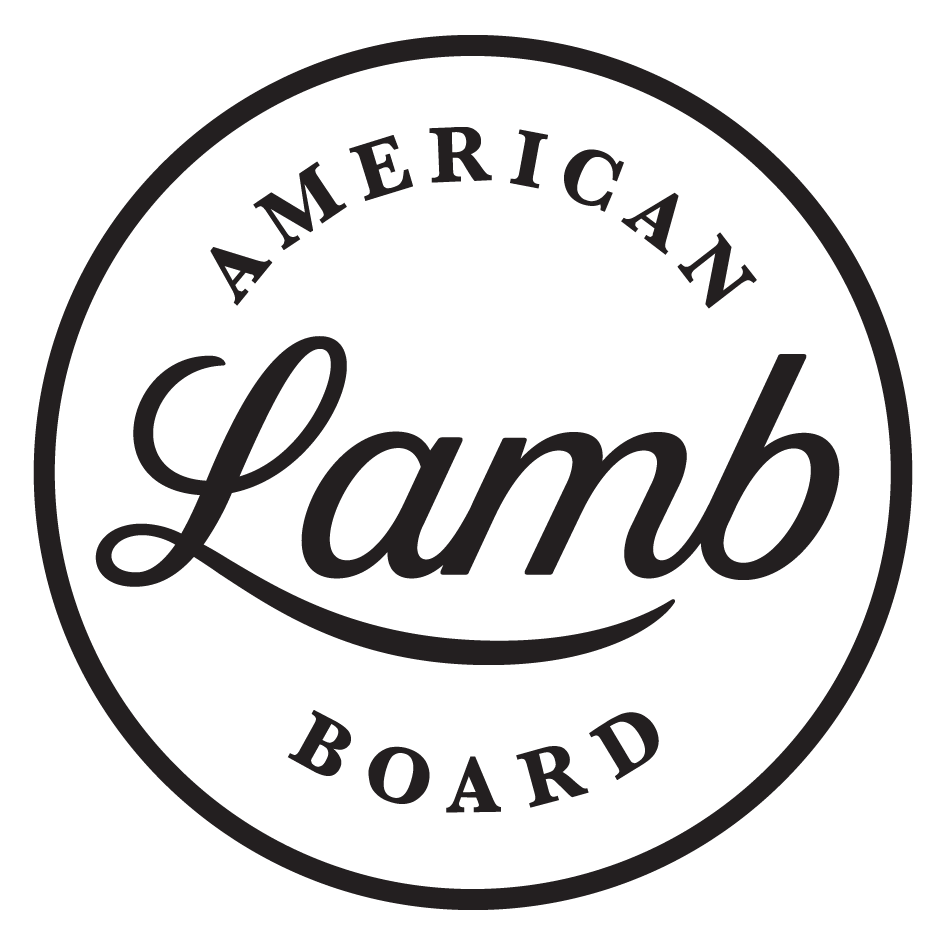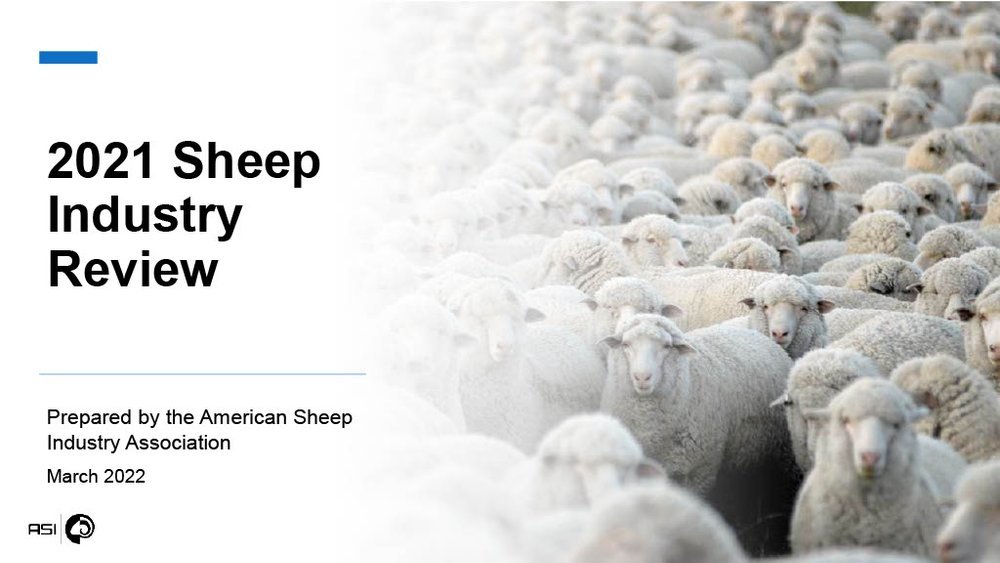Sheep Industry Report Provides 2021 Assessment
The sheep and lamb industry saw prices reach historic levels in 2021. The year of outstanding domestic demand for lamb is summarized in the 2021 Sheep Industry Review, a checkoff funded report commissioned by the American Lamb Board (ALB) and compiled by the American Sheep Industry Association.
"The pandemic continued to bring uncertainty during 2021, which drove shifts in consumer food consumption and buying patterns,” says ALB Chairman Peter Camino of Buffalo, Wyoming. "Per capita lamb consumption was 1.36 pounds per person for 2021, the highest level since the early 1990’s. Gains in lamb consumption have been linked to the year-round availability of more lamb cuts in supermarkets and direct sales as a result of the pandemic."
Various factors on the supply side supported higher lamb prices. Persistent drought, higher feed costs and other production constraints, as well as strong slaughter ewe prices, resulted in significantly large mature sheep slaughter in 2021. The continuing downward trend in the U.S. sheep flock has resulted in a smaller lamb crop and lamb supply. Additionally, cold storage inventories in 2021 were below year-ago levels which provided further support to lamb prices.
Although economic uncertainty continued in 2021, with focus on price inflation and consumer response to higher prices for meat and other goods, the feeder and slaughter lamb prices saw gains of more than 40% in 2021. The wholesale lamb market also saw record highs in response to strong consumer demand and tighter available supplies.
Inventory
Sheep & lamb inventory continued a declining trend, down 2% to 5.065 million head. Breeding sheep inventory registered at 3.71 million head, also down 2% from the previous year. Replacement prices posted large gains during the latter half of 2021, similar to live lamb and wholesale lamb price trends. Ewe prices all set new record levels in 2021.
Texas held onto the top position with 430,000 ewes. California and New Mexico each had the largest ewe increases, both at 8% but with significant difference in total ewes: California's inventory is five times the amount of New Mexico's ewe inventory.
Slaughter and production
Commercial slaughter was up slightly in 2021 to 2.25 million head. Tighter supplies of feeder lambs were evidenced in lower on-feed numbers during spring and summer months with inventories climbing into the fall. Compared to the 2015–2019 average, on-feed supplies averaged 7% lower.
As the sheep flock has continued to decline, so has lamb production. Commercial lamb production was down only 0.5% for the year but was 8% lower than the 2015–2019 average. This lower production is attributed to smaller lamb supply and lighter weights.
Feeder lamb (60–90 lbs.) prices in 2021 were above previous year levels every week except the first week of March. In fact, the industry saw a new record high posted at $271.27 per cwt. This equates to 2021 prices that were 45% higher than the 2015–2019 average price. These stronger prices were due to tighter lamb supplies, strong consumer demand for lamb, and growth in ethnic, local and niche market demand.
Slaughter lamb prices also set records coming in 44.8% higher than 2020, averaging $217.25 per cwt. The record high was set in early August. This brings 2021 prices 46% higher than the 2015–2019 average.
Wholesale lamb values reached record levels during the second half of 2021. The robust wholesale market was supported by strong consumer demand, supply constraints in the meat and poultry complex and year-round availability of more lamb cuts in supermarkets. Based on retail data collected by 210 Analytics, LLC, across fresh and processed meat, lamb was the only one to grow pound sales year-on-year in 2020. Lamb also had the highest growth in pound sales when compared to the 2019 pre-pandemic normal.
Imports and exports
Strong US lamb prices and tight domestic supplies provided an attractive market for lamb imports. In fact, lamb imports were 264.2 million pounds in 2021, up 23.7%.
Mutton imports have surged in the last few years and were up 13.5% to 99.8 million pounds in 2021. Australia was the lead country for lamb imports, contributing 195.6 million pounds at an increase of 20.7% in 2021. New Zealand also contributed to lamb import totals at 32.9% above 2020 and 64.4 million pounds. Overall, imports responded to record high U.S. wholesale lamb prices during the latter half of 2021.
Exports for lamb and mutton totaled 3.48 million pounds, 7.6% higher than in 2021. Growth in the export sector was driven primarily by lamb variety meat exports to Mexico. Lamb muscle cut exports rallied to the Caribbean in 2021, with notable growth in the Dominican Republic and gains to Bermuda, the Bahamas, Trinidad and Tobago and Turks and Caicos. Lamb exports as a percent of lamb and mutton production were 2.4%, slightly higher than in 2020, but lower than the 2015–2019 average of 3.7%.
Live sheep exports increased in 2021 driven by exports to Canada, which accounted for 74% of all live sheep exports. Live exports to Mexico have been on a decline in recent years.
Market outlook
Looking at 2022, the 2021 Sheep Industry Review report estimates commercial production to decline 4% and commercial slaughter of American Lamb to decrease by about 3%. Likewise, imports are expected to fall 3% to 352 million pounds. Total lamb availability is expected to contract by 5%, with a decline in per capita availability due to the decline in production relative to the US population. In 2022, feeder lamb prices are expected to average 10% higher and slaughter lamb prices to average 5% higher.
Production costs for all segments of the industry are expected to remain high in 2022, making getting lamb to the consumer more costly than prior years. Feed costs are expected to remain high due to drought conditions and strained hay stocks. Tighter lamb supply suggests high live lamb and meat prices will continue in 2022. Inflationary pressure and lower disposable incomes are expected to impact consumer demand and purchasing behavior in 2022. Supply chain constraints and labor challenges are likely to continue during 2022.
The entire 2021 Sheep Industry Review can be found at LambResourceCenter.com

